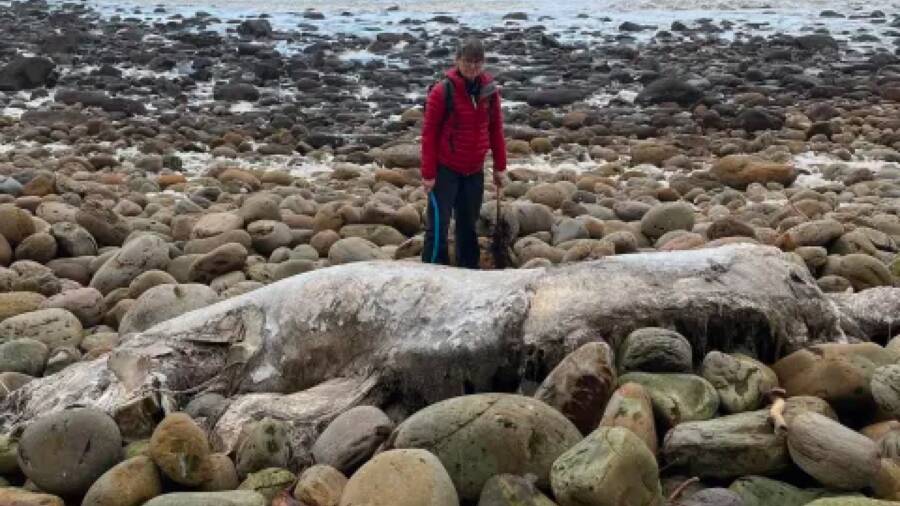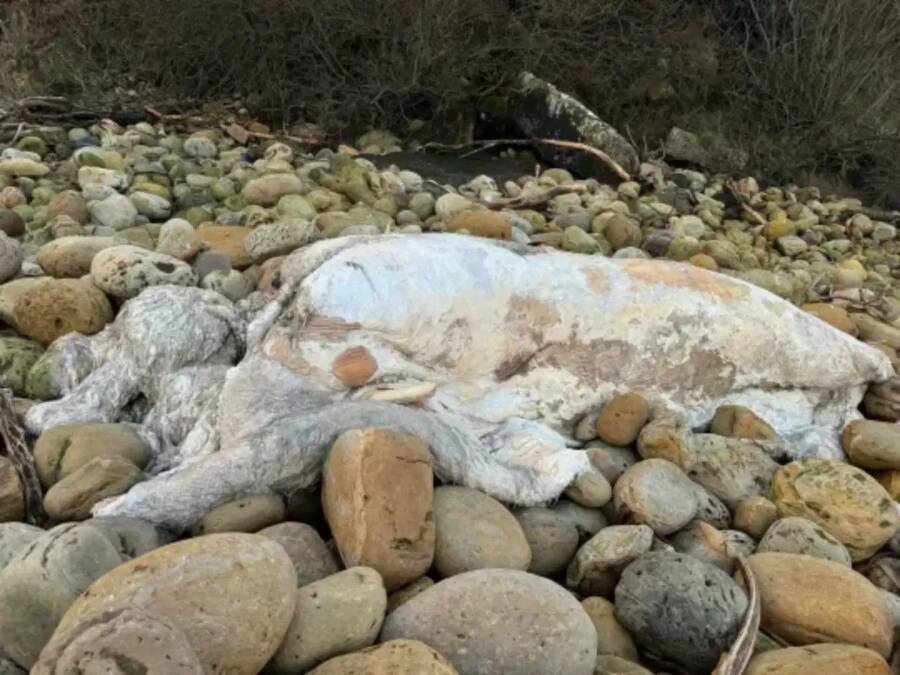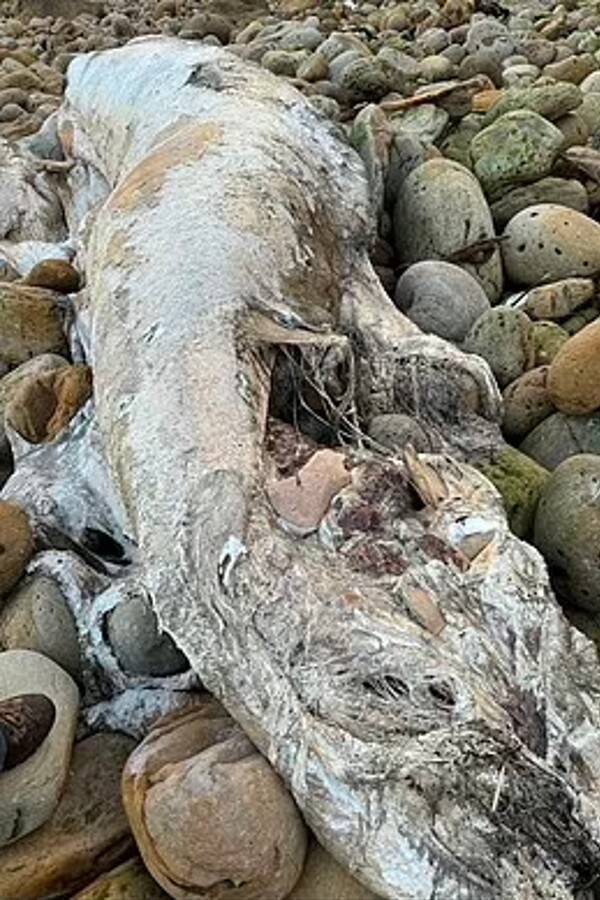The "seabeast" was discovered by a beachcomber who posted photos of it online — but no one can tell exactly what it was.

Caroline PindarThe 16-foot-long “seabeast” has baffled experts.
Caroline Pindar was strolling along the beach in Hayburn Wyke, North Yorkshire, when she noticed something odd oozing between the rock pools. Upon closer inspection, she discovered that it was the monstrous remains of a mysterious, faceless “seabeast,” one that has baffled experts.
“There had been a severe storm and there was a lot of foam amongst the rocks where the tide had receded,” Pindar recalled, according to the Daily Mail. “At a distance I wondered if the remains were foam or washed up fishing debris — there is lots of this type of pollution round here.”
Pindar made her way closer and found that the object was not foam or debris, but some kind of creature, accompanied by a “very strong” scent. It was about 16 feet long, heavily decomposed, and covered in blotchy, white skin. Pindar observed mounds of blubber and bones protruding through its side that she thought looked like a walrus’ tusks.
But Pindar wasn’t sure what kind of creature it was. It was unlike anything she had seen before.
“I had seen dead porpoises in various states of decomposition around here, and seen/smelt a decomposing whale from the water in Orkney, but nothing like this,” she explained.

Caroline PindarThe creature was heavily decomposed and faceless and emitted a “very strong” scent.
So Pindar, 61, decided to put images of the mysterious seabeast online.
As the Daily Mail reports, she posted pictures of the seabeast in a specialist marine life group. But people online had very different ideas of what the creature could be.
Guesses ranged from a walrus, to a dolphin, to a seal, to a “minke whale.”
Experts from the UK Cetacean Strandings Investigation Programme also examined Pindar’s photos of the mysterious sea creature, but even they weren’t entirely sure what it could be.
“This one’s a bit trickier!” Project manager Rob Deaville exclaimed. “Looks like the rotted remains of a larger cetacean — I think I can see remnants of throat pleats in one of the images.”
Deaville suggested that, based on its size, it could indeed be a minke whale. These whales can grow up to 35 feet. But he admitted that it was difficult to make an accurate call because of the creature’s decomposition.

Caroline PindarThe mysterious seabeast could be some kind of baleen whale, but experts are unable to conclusively identify it.
“I’d perhaps just call it an unidentified or indeterminate-identity baleen whale?” he said. (Minke whales are part of the baleen whale family.)
The seabeast that washed ashore in Yorkshire is just the latest globster — an official term that refers to an unidentified organic mass that washes up on the shore of a body of water — to appear in recent years. One washed up in Mexico in 2016, Russia in 2018, and Papua New Guinea in 2023. This last one was referred to as a “mermaid globster” because its long, narrow shape and “tail” struck an uncanny resemblance to the mythical sea dwellers.
In the end, we’ll probably never know what washed up on the shores of Yorkshire. Such globsters appear to come and go on beaches worldwide, and could be whales, manatees, sharks, or dolphins. But whatever it is, Pindar hopes that it died a peaceful death and that it wasn’t trapped in nets.
“My overwhelming feeling was sadness that an animal had died,” she said.
After reading about the mysterious, faceless seabeast that washed up in Yorkshire, learn about the strange — and potentially cursed — “witch bottles” that have been washing up in Texas. Or, delve into the legend of the Montauk Monster, the bizarre creature that washed up in Long Island.





